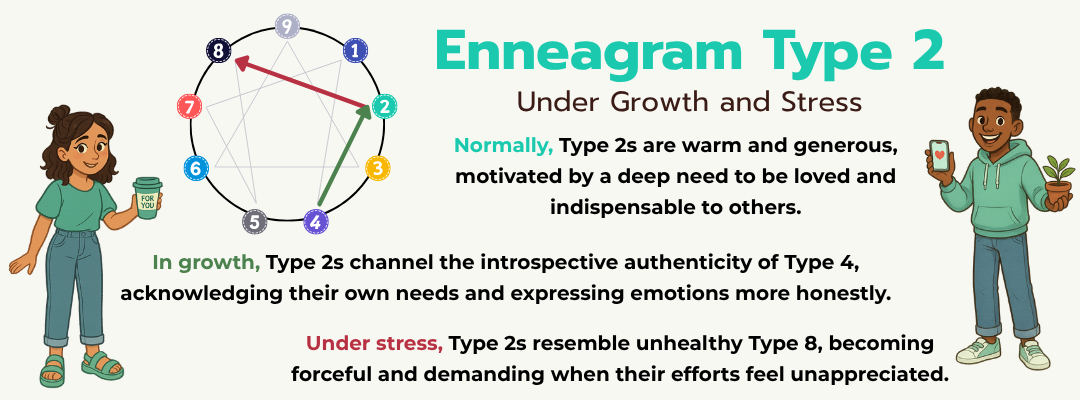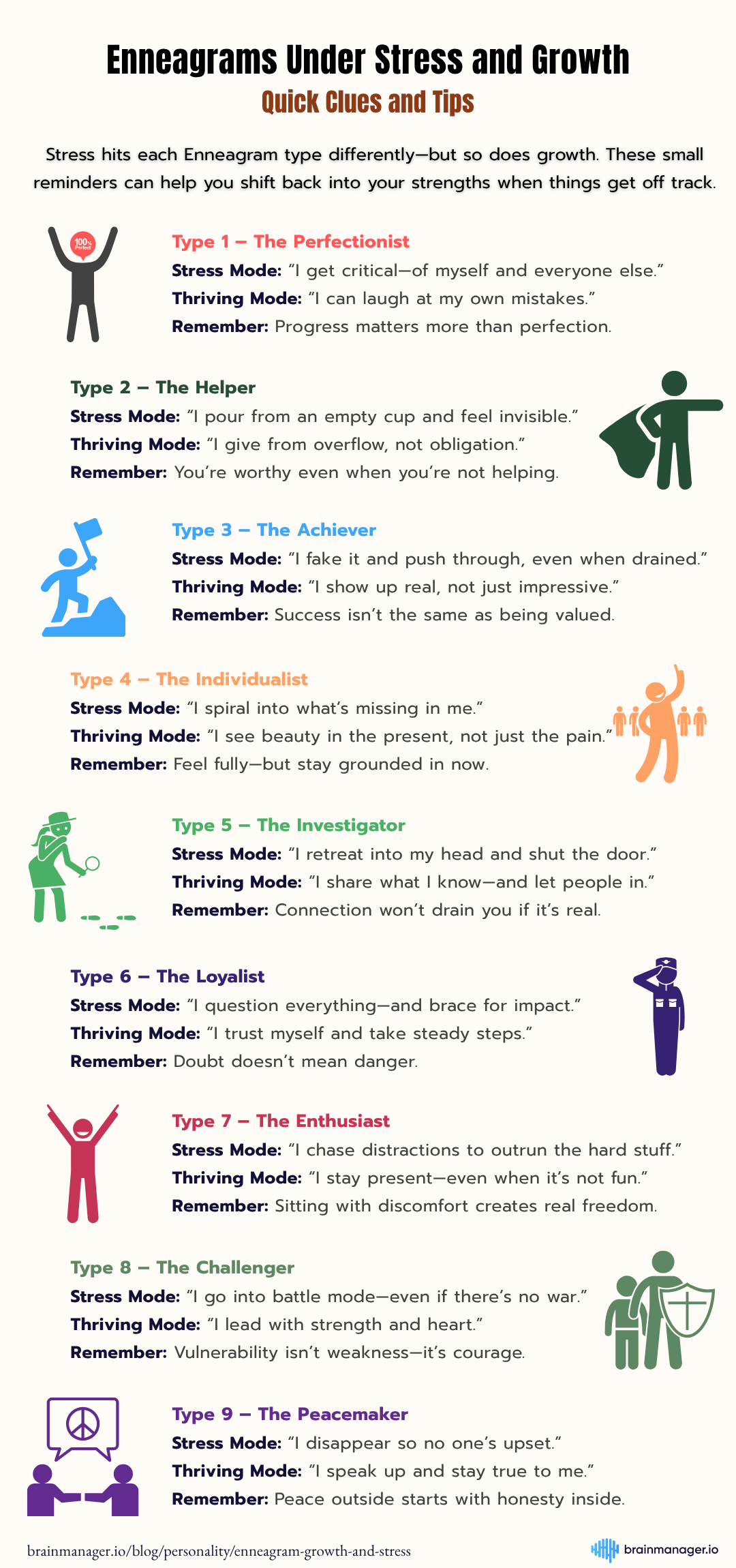Enneagram Growth and Stress Paths: What They Reveal and How to Grow From Them
They say tough times reveal your true character—but what if they also revealed your next opportunity to grow? The Enneagram’s stress and growth paths show how each type shifts under pressure, helping you understand those changes not as failures, but as the start of becoming your best self.


Back
8 mins read
Ever feel like you're two different people? One version of you is focused, capable, and totally in your groove—then suddenly, you snap into someone you barely recognize. And it always seems to happen at the worst times—like under pressure or stress.
Maybe you tested as a Type 3—driven, polished, and hungry for success (but make it look easy). Yet when your coworker got promoted, you found yourself spiraling: picking apart their every move, yet avoiding your own to-do list like a pro.
Or maybe it's the opposite. You usually operate like a classic Type 1 Perfectionist, powered by color-coded planners and back-to-back checklists. But then you head to a concert with friends, and suddenly you're okay with the kitchen spices being out of order. Who is this relaxed person?
Here's the thing: those "out of character" moments? They're not mistakes. They're clues—little signals pointing toward your next breakthrough. They reveal more than surface behaviors—they offer insight into your deeper personality traits and emotional patterns.
In this article, we’ll explore how the Enneagram doesn't just show you who you are—it shows you how you grow. Every type has built-in stress patterns and growth paths. Learning to spot those shifts is where real transformation starts.
Related: Understanding Your Fears Through the Enneagram Lens
Enneagram Levels of Development: Growth and Stress Paths Explained
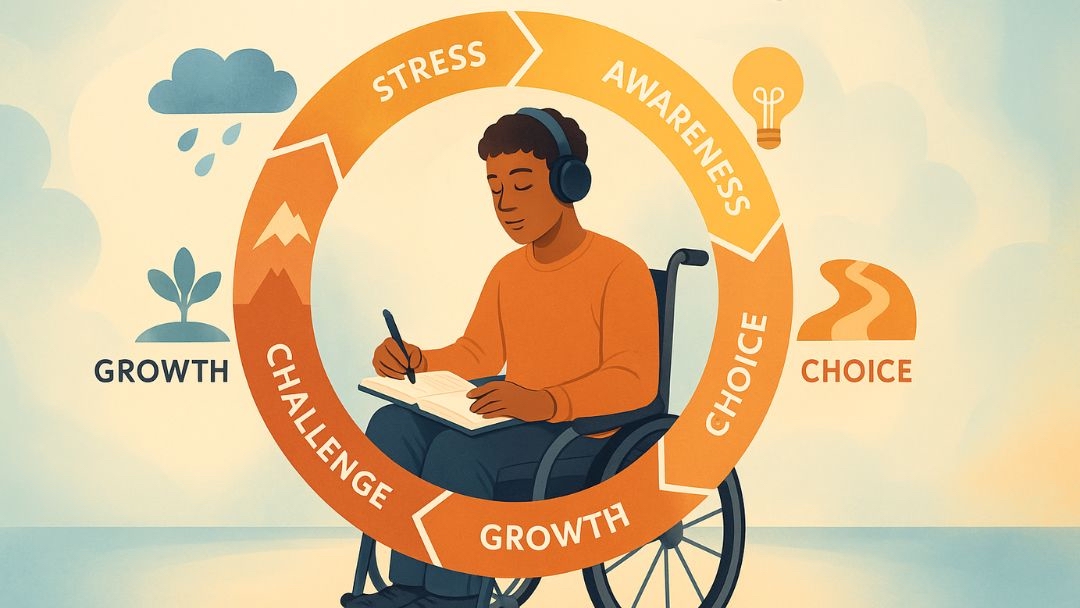
Each Enneagram type has two directional paths—one for stress, and one for growth—mapped out by what are called Enneagram Arrows. We tend to slip into one path when we’re under pressure, while the other emerges when we’re aligned, supported, and growing.
These arrows point us toward the behaviors of other types. In stress, we often adopt the unhealthy traits and coping mechanisms of the type we're connected to through what's called the Disintegration Arrow—falling back on habits that feel protective, but usually aren't helpful.
In growth, we start to lean into the healthier traits of a different type—tapping into strengths we might not naturally lead with. This is our Integration Arrow, and it can bring surprising balance, energy, and clarity.
But don’t worry—you’re not turning into another type.
Think of it more like a temporary shift in perspective, one that helps you access tools you didn’t know you had—or see your challenges from a different angle. It’s one of the clearest examples of how your personality is more flexible than fixed.
Now let’s bring this to life.
What Do the 9 Enneagram Types Look Like During Growth and Stress?
Here’s how each type tends to shift when they’re under pressure—and how they evolve when they’re growing. From reactive patterns to powerful breakthroughs, these are the real-life moves that matter.
Enneagram 1 Growth and Stress Paths: From Self-Doubting to Spontaneity
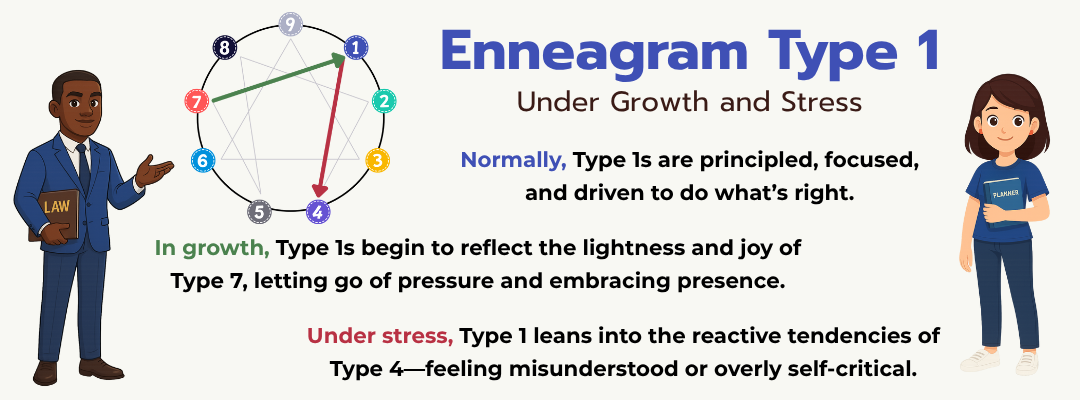
Principled, self-disciplined, and driven by a deep desire to do what’s right, Type Ones strive for improvement—of themselves, others, and the world around them. They often hold themselves to high standards that can feel impossible to maintain.
Enneagram Type 1 Under Stress (Disintegration to Type 4)
When overwhelmed, Ones may adopt the less healthy traits of Type 4. They become more self-critical, moody, and emotionally reactive—feeling misunderstood or weighed down by internal frustration. Their desire for perfection turns inward, leading to guilt, resentment, or burnout.
Enneagram Type 1 in Growth (Integration to Type 7)
In a state of growth, Ones begin to embody the lightness and spontaneity of a healthy Type 7. They loosen their grip on rigid expectations, embrace joy, and become more open to fun, flexibility, and self-forgiveness.
Growth Tip for Enneagram 1
Give yourself permission to enjoy life without fixing it first. Perfection isn’t the point—progress and presence are where real growth begins.
Enneagram 2 Growth and Stress Paths: From Control to Connection
Empathetic, generous, and deeply attuned to others’ needs, Type Twos are driven by a desire to feel loved and appreciated. But that outward focus can sometimes make it difficult to recognize their own needs—especially when they’re caught in a cycle of giving too much.
Enneagram Type 2 Under Stress (Disintegration to Type 8)
When overwhelmed, Helpers may take on the more reactive traits of an unhealthy Type 8. Their warmth can harden into control, manipulation, or resentment—especially when they feel unappreciated or taken for granted.
Enneagram Type 2 in Growth (Integration to Type 4)
In growth, Twos start to look more like a healthy Type 4. They embrace authenticity, honor their own emotions, and learn to say “no” without guilt—recognizing that their needs matter just as much as anyone else’s.
Growth Tip for Enneagram 2
You don’t have to earn love. Let others care for you, too. Real connection comes from honesty—not self-sacrifice.
Enneagram 3 Growth and Stress Paths: From Demotivated to Authentically Aligned

Ambitious, adaptable, and success-oriented, Type Threes are natural achievers who thrive on recognition and results. But their identity can get tangled up in how they express success, leaving little space for rest or real connection.
Enneagram Type 3 Under Stress (Disintegration to Type 9)
When overwhelmed, Achievers may withdraw like an unhealthy Type 9. They start to procrastinate, lose motivation, and go through the motions—pretending everything’s fine while feeling increasingly detached.
Enneagram Type 3 in Growth (Integration to Type 6)
In growth, Threes take on the grounded loyalty of a healthy Type 6. They connect more deeply with others, value collaboration, and begin to prioritize shared success over constant self-promotion.
Growth Tip for Enneagram 3
You are more than what you accomplish. Your value isn’t measured in checkboxes—real success includes rest, purpose, and presence.
Enneagram 4 Growth and Stress Paths: From Emotional Intensity to Creative Clarity
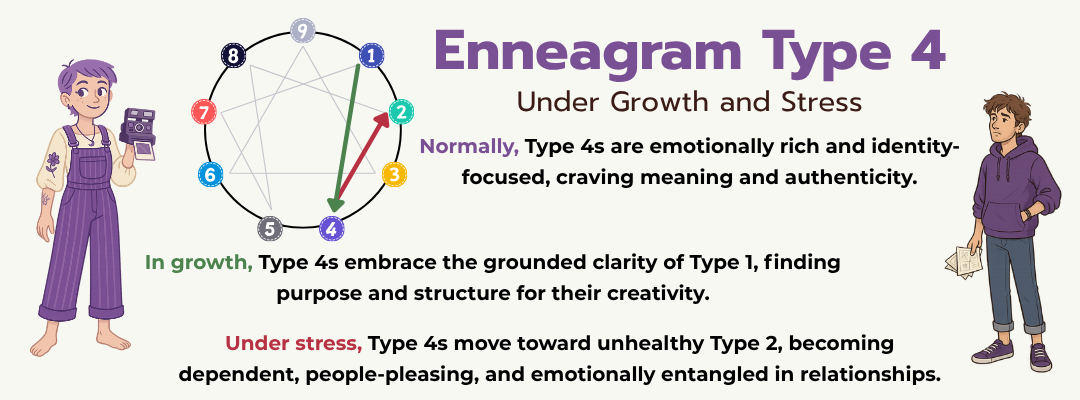
Introspective, expressive, and deeply in touch with emotion, Type Fours long to understand themselves and be understood by others. They’re often aware of their own emotional depth, but their focus on what's missing can cloud their sense of self-worth.
Enneagram Type 4 Under Stress (Disintegration to Type 2)
When under pressure, Fours may take on the unhealthy traits of Type 2. They become clingy, people-pleasing, and overly focused on others in a way that makes them lose touch with their own identity.
Enneagram Type 4 in Growth (Integration to Type 1)
In growth, Individualists channel the structure and discipline of a healthy Type 1. They gain emotional clarity, create focus around their ideas, and turn their creativity into something tangible. Less chaos, more completion.
Growth Tip for Enneagram 4
You’re not only real when you’re feeling deeply. You still matter—even in quiet moments, even without intensity.
Enneagram 5 Growth and Stress Paths: From Withdrawing to Empowered Action

Observant, analytical, and deeply curious, Type Fives thrive on knowledge and inner depth. But when overwhelmed, they may isolate for long periods, struggling to re-engage with the outside world.
Enneagram Type 5 Under Stress (Disintegration to Type 7)
When life feels too chaotic, Fives may shift into the scattered energy of an unhealthy Type 7. They become distracted, restless, and lose focus—diving into mental rabbit holes instead of engaging with reality.
Enneagram Type 5 in Growth (Integration to Type 8)
In growth, Investigators take on the boldness and decisiveness of a healthy Type 8. They move from observation to action, using their insights to lead, take charge, and make an impact.
Growth Tip for Enneagram 5
Don’t just think it—live it. Your ideas matter, but the world needs to see them in motion.
Enneagram 6 Growth and Stress Paths: From Anxiety to Inner Assurance

Loyal, responsible, and always scanning for what could go wrong, Type Sixes seek safety through preparation and support. They tend to build strong relationships—but their anxiety can make even secure bonds feel uncertain.
Enneagram Type 6 Under Stress (Disintegration to Type 3)
When stressed, Sixes may take on the image-focused intensity of an unhealthy Type 3. They become overly concerned with appearances, push themselves too hard, and project fake confidence while battling anxiety underneath.
Enneagram Type 6 in Growth (Integration to Type 9)
In growth, Loyalists embody the calm presence of a healthy Type 9. They learn to trust themselves more, feel grounded, and release the constant need to predict and prepare. Inner peace replaces inner panic.
Growth Tip for Enneagram 6
Safety doesn’t come from control—it comes from trust. Start with trusting your own inner compass. It’s steadier than you think.
Enneagram 7 Growth and Stress Paths: From Escaping Discomfort to Embracing Depth
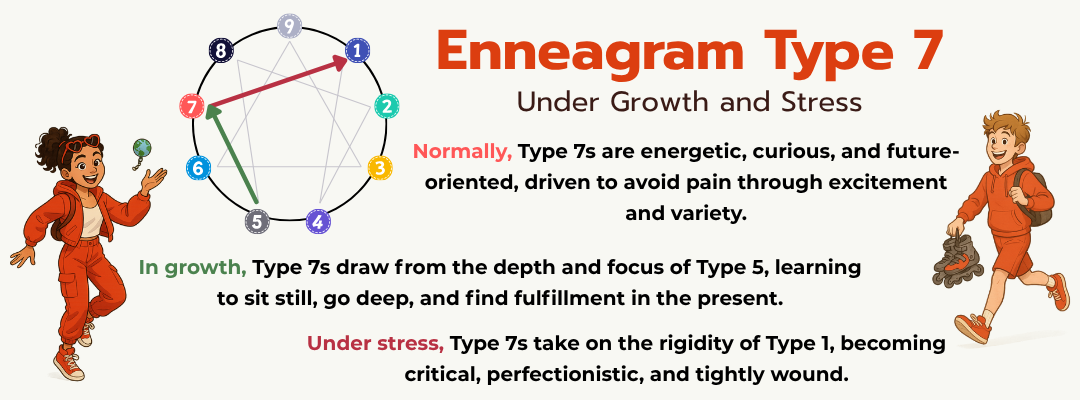
Energetic, imaginative, and fun-loving, Type Sevens are always living their life to the fullest, chasing the next adventure or distraction. Their enthusiasm is a gift, but it can also create two lines of internal conflict: the desire to feel free versus the need to feel grounded.
Enneagram Type 7 Under Stress (Disintegration to Type 1)
When overwhelmed, Sevens may take on the rigid intensity of an unhealthy Type 1. They become reactive, overly critical, and impatient—often trying to fix everyone else while avoiding their own discomfort.
Enneagram Type 7 in Growth (Integration to Type 5)
In growth, Enthusiasts slow down and embrace the thoughtful focus of a healthy Type 5. They become more present, introspective, and capable of sitting with stillness instead of avoiding it.
Growth Tip for Enneagram 7
You don’t have to chase joy to find it. Sometimes, it’s waiting in the quiet moment you’ve been trying to avoid.
Enneagram 8 Growth and Stress Paths: From Detachment to Empowered Vulnerability
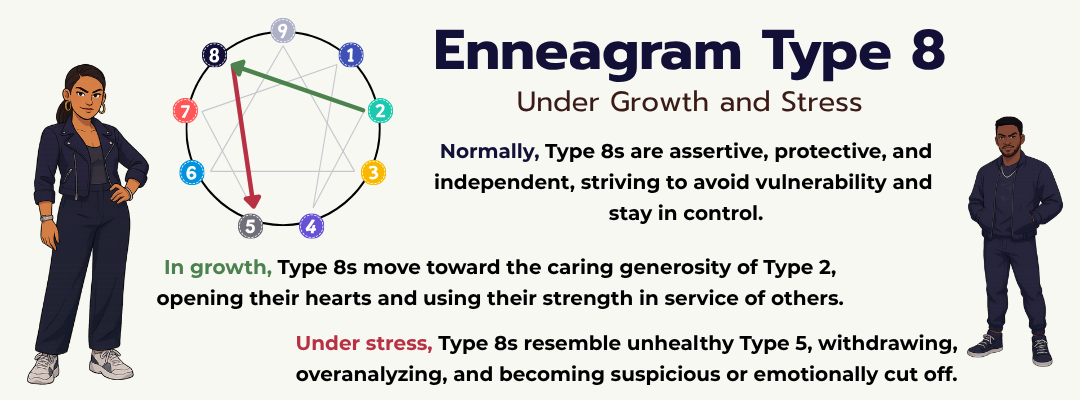
Strong-willed, protective, and fiercely independent, Type Eights want to stay in control—of themselves, their environment, and their emotions. They often resist appearing weak, but leaning into vulnerability can help them develop more balanced strength.
Enneagram Type 8 Under Stress (Disintegration to Type 5)
When stressed, Eights may withdraw like an unhealthy Type 5. They can become secretive, emotionally detached, and even cynical—especially if they feel powerless or exposed.
Enneagram Type 8 in Growth (Integration to Type 2)
In growth, Challengers embrace the warmth and compassion of a healthy Type 2. They become more open, supportive, and willing to show vulnerability—leading from connection instead of control.
Growth Tip for Enneagram 8
Real strength includes softness. You don’t have to armor up to be safe—trusting others can be its own kind of power.
Enneagram 9 Growth and Stress Paths: From Disappearing to Showing Up Fully
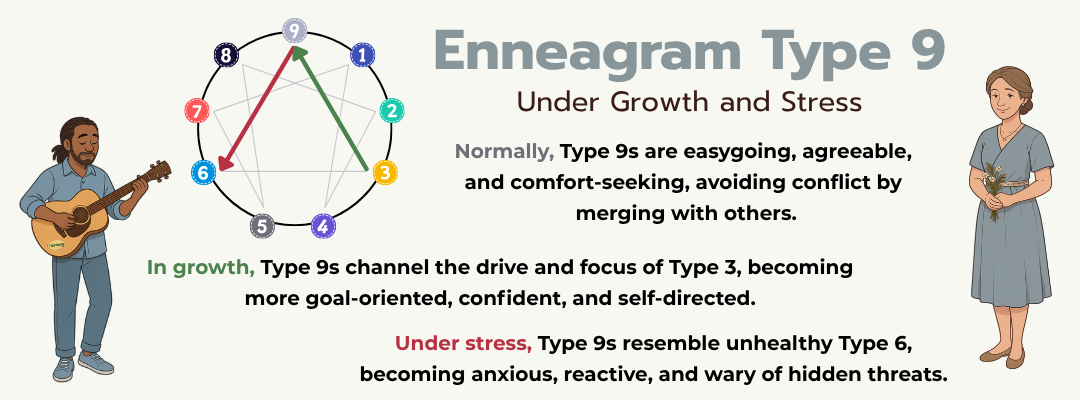
Easygoing, supportive, and conflict-averse, Type Nines want peace above all—but that peace often comes at the cost of their own priorities. They may see themselves as average or unimportant, but when they take action, their quiet power becomes undeniable.
Enneagram Type 9 Under Stress (Disintegration to Type 6)
When overwhelmed, Peacemakers may take on the anxious traits of an unhealthy Type 6. They become indecisive, overly worried, and begin to doubt their ability to act or speak up.
Enneagram Type 9 in Growth (Integration to Type 3)
In growth, Nines tap into the drive and self-assurance of a healthy Type 3. They find motivation, set clear goals, and begin to value their voice and presence in the world.
Growth Tip for Enneagram 9
Your presence matters. Don’t disappear to keep the peace—showing up for yourself is how real harmony begins.
Why Your Stress and Growth Paths Both Matter—In Different Ways
At first, it might seem like we should avoid our “stress self.” But that part of you isn’t a mistake—it’s a message.
Stress and growth paths aren’t just abstract ideas or directional arrows. They’re your real-time feedback system—subtle signals that something inside you is shifting. Becoming aware of those signals is one of the most powerful tools for real self-awareness.
That urge to please and be nice to everyone, the spiral of worst-case thinking, or the instinct to shut down and numb out? Those are red flags waving for your attention. They're not failures. They're invitations to pause and reflect.
When you catch yourself sliding into old patterns, you don’t need to shame or “fix” it.
You can treat those moments as starting points. Your stress path isn’t a flaw—it’s a flashlight. It shines a light not just on your behavior, but on the underlying personality characteristics driving it.
On the other side, your growth path reveals traits you’re ready to explore—things like playfulness, patience, boundary-setting, assertiveness, or vulnerability. When you surprise yourself by showing up differently, it’s not random. It’s a positive sign that you’re evolving—growing into traits that once felt out of reach.
Stress shows you what needs care, while growth gives you direction.
Together, they create a feedback loop: notice the signal, try something small, see what changes, and then repeat. Over time, those small experiments become real transformations that support your overall well-being.
You’re Not Off Track—You’re Becoming More You
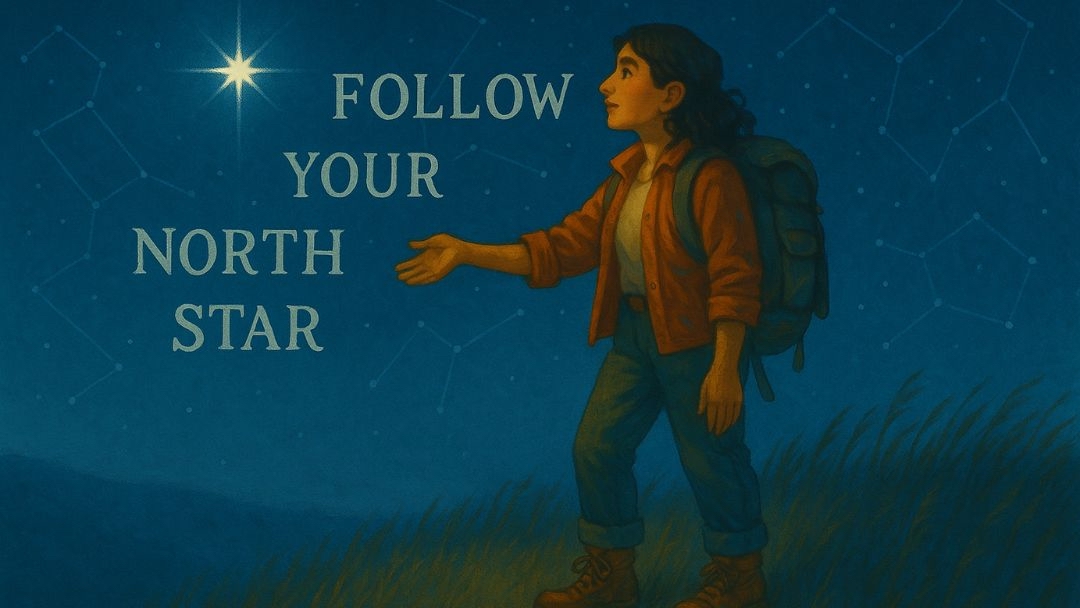
As we wrap up, remember this: you’re more than just your core type. And no—you’re not losing your mind when you suddenly channel your inner rebel, hermit, diva, or drill sergeant. You’re just temporarily visiting another corner of your Enneagram neighborhood—an extension of your evolving personality.
These detours might feel confusing at first, but they’re not glitches. They’re guidance. They reveal what you long for, where you’re hurting, where you need to take better care of yourself, and—most importantly—who you’re becoming. Even shifting between personality types momentarily is part of the journey toward integration.
Stress doesn’t mean you’re broken. Growth doesn’t mean you’ve “arrived.” Both are part of the process, nudging you toward wholeness.
So next time you catch yourself acting “so unlike you,” pause and ask: What’s this version of me trying to say?
Chances are, it’s not chaos. It might be your inner voice reaching for a new word, a clearer truth, or a deeper connection with your values. And as you grow, don’t underestimate the role of family, community, or reflection in helping you uncover what’s most valuable.
Stanislava Puac Jovanovic
Content Writer
Published 4 November 2025
